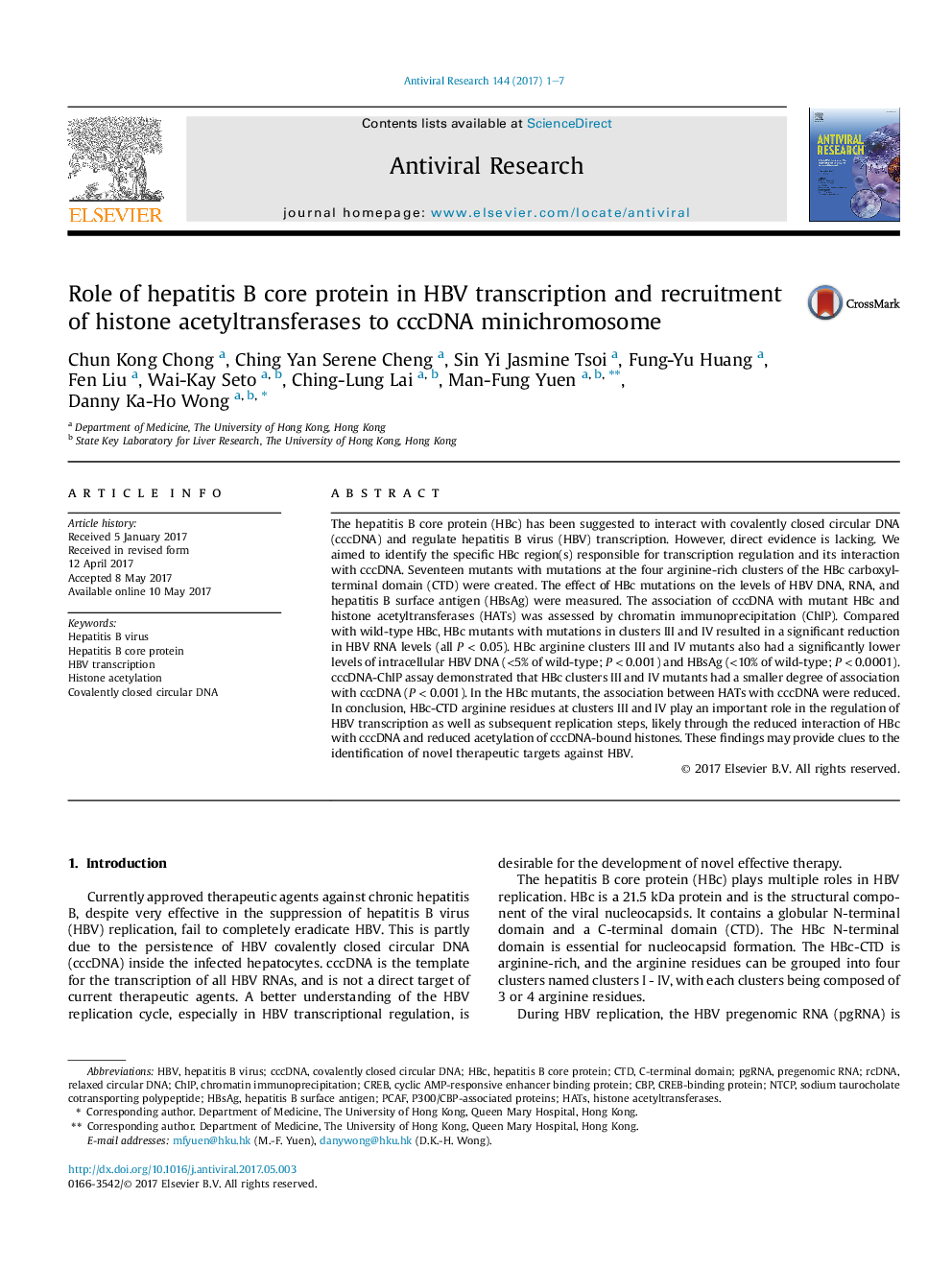| کد مقاله | کد نشریه | سال انتشار | مقاله انگلیسی | نسخه تمام متن |
|---|---|---|---|---|
| 5551695 | 1557799 | 2017 | 7 صفحه PDF | دانلود رایگان |

- We assessed the role of hepatitis B core protein (HBc) in HBV transcription by mutational analysis.
- HBV transcription levels in HBc mutants with mutations at arginine clusters III and IV were lower than wild-type HBc.
- The interaction between HBc clusters III and IV mutants and covalently closed circular (ccc) DNA were reduced.
- In strains with HBc clusters III and IV mutations, the recruitment of histone acetyltransferases to cccDNA is impeded.
- HBc arginine clusters III and IV are potential therapeutic target sites against HBV replication.
The hepatitis B core protein (HBc) has been suggested to interact with covalently closed circular DNA (cccDNA) and regulate hepatitis B virus (HBV) transcription. However, direct evidence is lacking. We aimed to identify the specific HBc region(s) responsible for transcription regulation and its interaction with cccDNA. Seventeen mutants with mutations at the four arginine-rich clusters of the HBc carboxyl-terminal domain (CTD) were created. The effect of HBc mutations on the levels of HBV DNA, RNA, and hepatitis B surface antigen (HBsAg) were measured. The association of cccDNA with mutant HBc and histone acetyltransferases (HATs) was assessed by chromatin immunoprecipitation (ChIP). Compared with wild-type HBc, HBc mutants with mutations in clusters III and IV resulted in a significant reduction in HBV RNA levels (all PÂ <Â 0.05). HBc arginine clusters III and IV mutants also had a significantly lower levels of intracellular HBV DNA (<5% of wild-type; PÂ <Â 0.001) and HBsAg (<10% of wild-type; PÂ <Â 0.0001). cccDNA-ChIP assay demonstrated that HBc clusters III and IV mutants had a smaller degree of association with cccDNA (PÂ <Â 0.001). In the HBc mutants, the association between HATs with cccDNA were reduced. In conclusion, HBc-CTD arginine residues at clusters III and IV play an important role in the regulation of HBV transcription as well as subsequent replication steps, likely through the reduced interaction of HBc with cccDNA and reduced acetylation of cccDNA-bound histones. These findings may provide clues to the identification of novel therapeutic targets against HBV.
Journal: Antiviral Research - Volume 144, August 2017, Pages 1-7